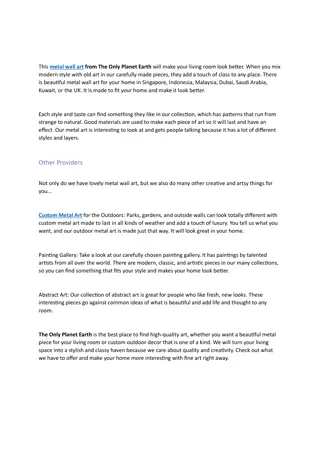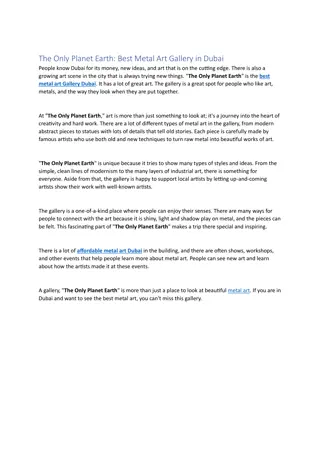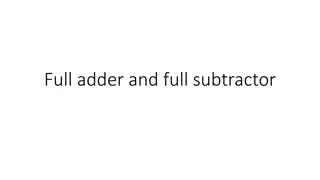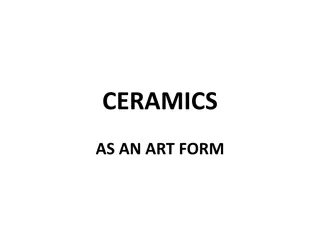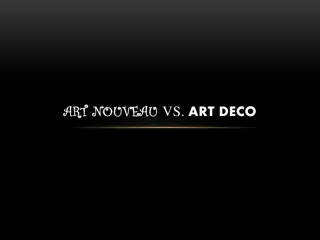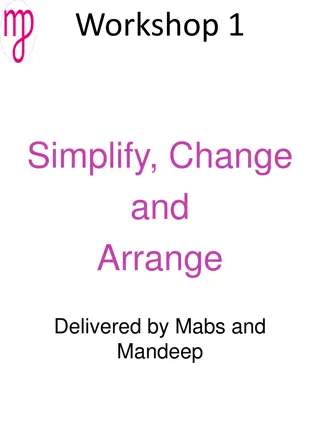The Art of Work Simplification
Work simplification is the conscious effort to find the simplest and most efficient ways of doing work to eliminate waste of time, energy, and resources. This involves techniques like time and motion studies, Mundel's classes change, and focusing on body mechanics. The approach includes eliminating unnecessary parts, combining and rearranging processes, and simplifying tasks. However, obstacles like employee resistance to change can hinder progress in work simplification efforts.
Download Presentation

Please find below an Image/Link to download the presentation.
The content on the website is provided AS IS for your information and personal use only. It may not be sold, licensed, or shared on other websites without obtaining consent from the author.If you encounter any issues during the download, it is possible that the publisher has removed the file from their server.
You are allowed to download the files provided on this website for personal or commercial use, subject to the condition that they are used lawfully. All files are the property of their respective owners.
The content on the website is provided AS IS for your information and personal use only. It may not be sold, licensed, or shared on other websites without obtaining consent from the author.
E N D
Presentation Transcript
WORK SIMPLIFICATION
- History of Work Simplification. - Techniques of time and motion studies. - Mundel's classes change. - Body mechanics.
There Has to Be a Better Way! Work simplification is the organized application of common sense to eliminate waste of any kind, such as time, energy, space and imagination through simpler or better ways of doing work.
Nickell and Dorsey states; Work simplification is conscious seeking of the simplest, easiest and quickest method of doing work
Approach to Work Simplification The basic approach to achieving our objectives of doing a better job, with less effort and time at the lowest possible cost is to: Eliminate the unnecessary parts of a process Combine and rearrange the rest of the process Simplify the necessary part of the process The sequence cannot be changed because it incorporates fundamentals of mental discipline we must follow in order to acquire and keep our objectivity. If we are to have an open mind in reviewing a job, the first question must be Is it necessary? If it isn t, stop right there. Too often effort is made to combine, rearrange or simplify jobs that should not exist.
Obstacles to Work Simplification If the objectives of work simplification are not new, and it is obvious that everyone should wish to find simpler and better ways of doing work, why don t we get more action? The best improvements in the manner of office work performance may produce discouraging results because of employee attitudes and reactions. This has been summarized in four words: employee resistance to change. There are four definite reasons why we resist change: Change disrupts work habits. Change disrupts complacency. Change implies criticism. Change affects security.
History The traditional approach to methods improvement has been to employ highly trained specialist in industrial engineering techniques to spend full time on this activity. These experts are assigned the task of studying one activity after another throughout the entire organization. They are expected to locate opportunities for improved performance develop ways for these improvements to be achieved, evaluate their feasibility, sell their acceptance, and assist in their implementation. A great deal of progress has been achieve in this manner.
Household Similarly, daily household chores can be simplified in order to save the time and energy of the homemaker and his/her helpers. Tasks like sweeping, cooking, cleaning, washing, etc. Daily work can induce monotony and frustration.
Need Work simplification is in response to employees becoming overwhelmed by increasing organizational complexity, growing information overload, and a stressful 24/7 work environment. More than 7 out of 10 surveyed organizations rated the need to simplify work as an important problem, with more than 25 percent citing it as very important. Today, only 10 percent of companies have a major work simplification program; 44 percent are working on one. Design thinking, work redesign, and technology replacement are becoming critical programs for HR and business leaders seeking to simplify work practices and systems.
Techniques of time and motion studies
Time and motion study is a basic set of tools used by industrial engineers to increase operational efficiency through work simplification and the setting of standards, usually in combination with a wage-incentive system designed to increase worker motivation. Originally developed to drive productivity improvement in manufacturing plants, motion and time study is also now used in service industries.
Process chart The process chart is a step-by-step description of the method used in doing a task. It shows the flow of movement in the task and is most helpful in calling attention to unnecessary steps and motions.
Changes of place Operations of the hand Delay Inspection
Operations chart The operation chart is a graphical and symbolic representation of the manufacturing operations used to produce a product. The operation chart illustrates only the value-adding activities in the manufacturing process; therefore, material handling and storage are not illustrated in this chart.
Pathway of flow chart/ Pathway chart It is done with the help of a pin and string. String diagram is one of the useful and simplest techniques of method study. It can be defined as a scale model on which a thread is used to trace the path or movements of man and materials during a specified sequence of events.
Mundels Classes of Change
According to Mundel there are five levels of changes that can improve one s method of work:
1. Changes in body position and motions.
2. Changes in tools, working arrangements and equipment.
3. Changes in production sequence. Writing down the way a task is being done will show where unnecessary operations can be eliminated. Scalding dishes in the drainer and allowing them to dry without wiping them is an example of the elimination of one operation in this process.
4. Changes in finished product. Work simplification through changes in the product depends upon the available resources and the family s standard of housekeeping. Most families have certain preconceived standard for housekeeping. Some ideas and habits of the families cannot be changed. But the homemaker should persuade the members to accept new ideas and change the old standard.
5. Changes in the raw material. Use of new materials can result in enormous reduction inn time and energy.
Examples 1. The use of paper napkins may help the busy urban working housewife who does not find time for laundering. 2. The purchase of prepared masala from a reliable source may save her from the older habit of picking, cleaning and grinding them at home daily. 3. Use of instant coffee will save her time and energy. 4. Clothes made of new fibers may be easier to maintain than traditional materials.
BODY MECHANICS Body mechanics is a term used to describe the ways we move as we go about our daily lives. It includes how we hold our bodies when we sit, stand, lift, carry, bend, and sleep. Poor body mechanics are often the cause of back problems.
Posture We have all been told since childhood to "stand up straight". But it's easy to get into bad habits. Good body mechanics are based on good posture. Good posture means the spine is in a "neutral" position - not too rounded forward and not arched back too far. But what does good posture look like? It's easy, follow these few steps: Stand with your feet apart. Create a small hallow in your lower back by tucking the tailbone in and tilting your pelvic bone slightly forward. This is done by tightening the muscles of the buttocks and thus, rotating the pelvis into the neutral position. Be careful not to arch too much. Pull the shoulders back and lift your chest. Lift your chin until it is level and relax your jaw and mouth.
Reference http://www.familyresourcemanagement.org/services/work- simplification/#sthash.Wzyspl5y.dpuf http://www.yourarticlelibrary.com/home-management/home- science-work-simplification-methods-with-diagram/47806/ https://en.wikipedia.org/wiki/Flow_process_chart http://www.yourarticlelibrary.com/ergonomics/method- study/string-diagram-procedure-and-purpose-of-string- diagram/34479/ www.coloradospineinstitute.com/subject.php?pn=wellness-body- mechanics







